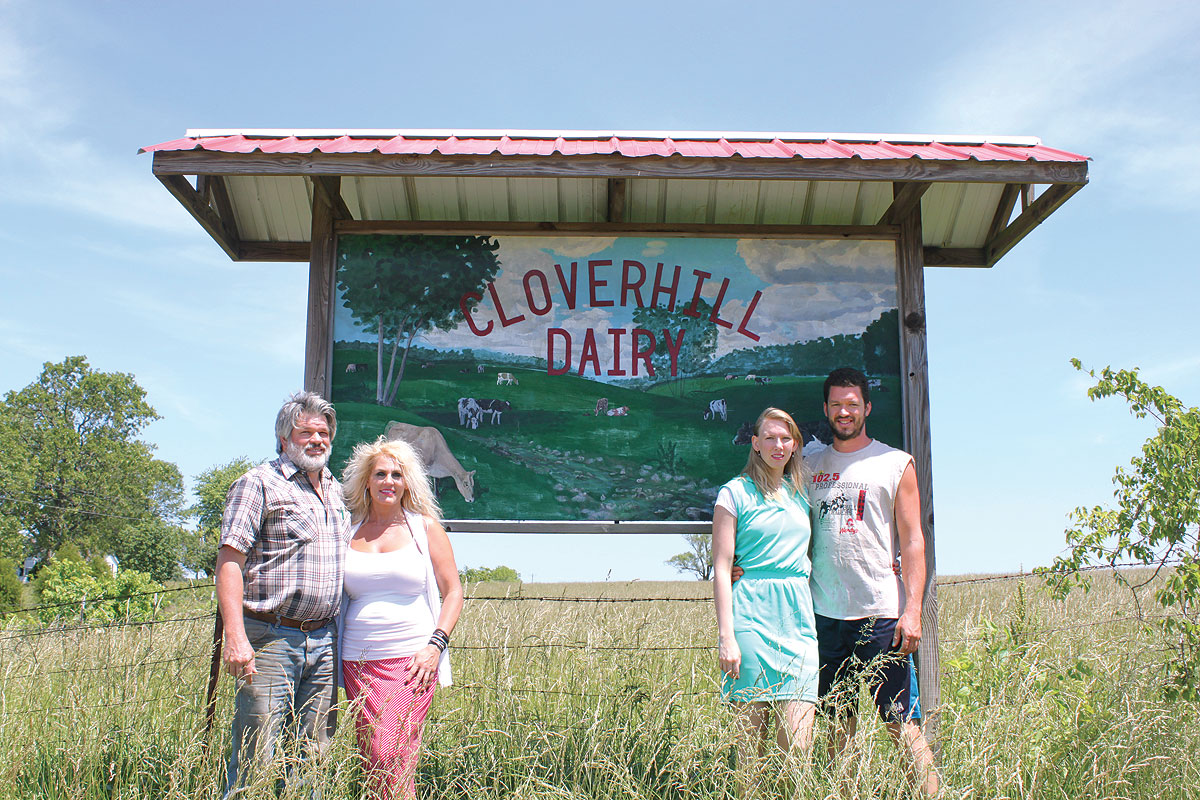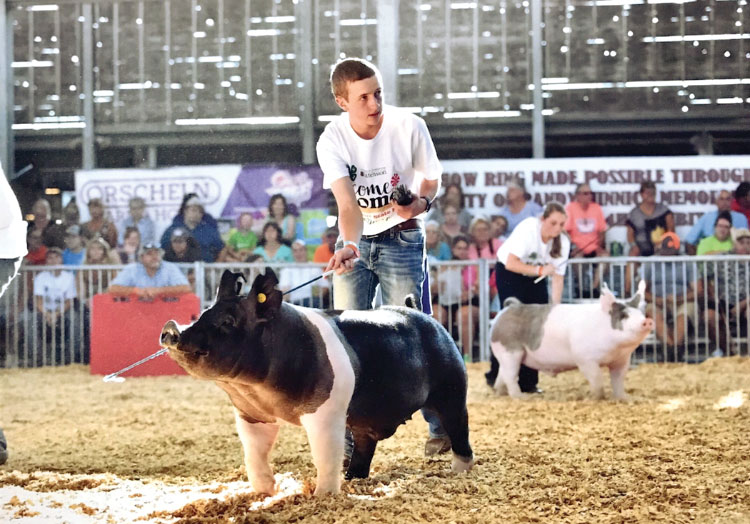“To be an organic farmer, you must change your mindset from conventional farming,” explained Dale Carter, Cloverhill Dairy owner. “You have to endorse the natural/biological system 100 percent.”
Dale and his son Nathaniel are partners on the dairy operation, which is in the last year of transition into a certified organic farm. “We have always been conscious of what we used on our farm and what we put into the animals,” he said. “We began our official transition in October 2016 to be certified.
“Organic Valley from Wisconsin came in the spring of 2015 and provided us more information about certified organic, including an antibiotic replacement protocol and other tips about requirements,” Dale said.
Cloverhill Dairy started in Wright County just north of Mountain Grove, Mo., in 1996 with 50 head of mostly Holstein heifers. Now they have expanded to a 200-head crossbred herd.
“My wife Rebecca and my son, Nathaniel and his wife Chalae, are the main operators of the farm. We also have two full-time apprentices and three part-time employees,” he explained.
“We increased from our original 150 acres to 640 now and raise our own hay, silage and as much grain – corn, wheat and oats – we can for our farm. Currently, we raise about two-thirds of what we need here on the farm.
In this last year of transition to organic, Cloverhill Dairy will be working to finalize the things they need for the certification. “Overall it is a lot of record keeping,” explained Dale. “For organic certification, you don’t use commercial fertilizer, pesticides, herbicides or fungicides, and the certifiers want some evidence of what you did use.
“Seed corn must be untreated and we keep our organic tags to show evidence of this,” he said. “Of course, they want to know about your cow health as well so we keep records about how the cows are raised, any health issues and how we treat them.”
According to Dale, certification requires three years of organic records on the land and one year on the animals.
“We had never used pesticides or herbicides on our farm, just fertilizer on our corn, so it wasn’t a huge change for us.”
Organic Animals
“Conventional farming uses chemicals to handle issues with animal health while organic farming uses natural biology. You must treat the gut of the cow, work with the natural bacteria in the gut of the cow to help keep animals healthy,” Dale said.
“Antibiotics can be used as a final step if needed, but then the animals must leave the herd. You are allowed to keep them on the farm, but you can’t milk them to ship organic milk or sell the animals as organic.
“When a farm is transitioned to organic, you can’t buy more conventional cows and transition them to organic. Once your farm is organic, you must raise your own animals or buy them from another organic producer. We plan to sell organic animals in the future.”
Rotational Grazing
“Organic land and pasture is just as much a part of the organic farming as the cow herd,” he said. “I have always worked with the soil to know what was needed but you can’t just swap inputs, you have to change your mindset,” Dale said.
“We utilize rotational grazing of tall grasses with short 12-hour grazing periods and long rest periods, at least 30 days,” Dale said. “Depending on the time of year, we go 50 to 60 days rest for the pastures. The longer the rest for the grasses, the better it produces.
“All of our rotational grazing land is improved, non-fescue pastures. We have been working to bring our land out of fescue by using alfalfa, white and red clover, brome, rye, orchard grass and other varieties to help keep the cows healthy and the land producing the to the best of its ability.
“Our winter mix for pasture improvement includes rye, hairy vetch, Austrian peas, turnips, radishes and crimson clover.
“Summer annual mixes include cow peas, turnips, radishes, clover, soybeans, buckwheat, sorghum/sudan cross, sunflowers and millet. We graze this but if there is extra we will use it for baleage.” “We usually get one good grazing on our winter mix and two in the spring/summer.”
Advice and Future Goals
“You have to change your mindset 100 percent – from conventional to endorsing the natural or biological system of animals, plants and soil,” Dale said. “Instead of using chemicals to control situations and issues, you have to learn to work with what has been provided naturally.
“This includes cattle utalizing rotational grazing. It’s cost effective to do that and to be certified, animals must have 120 days minimum grazing time.
“We want our farm to produce more – per acre and per cow making more profit in the end. Organic prices are two times the conventional prices and as the market continues to grow in this area, we hope to be able to provide that product. Currently with conventional farming, we are able to break even, but for the future of our dairy farm, we want to be able to make a living from the farm.
“We are doing this for the next generation,” Dale added. “Organic farming allows a way to create a quality product and make a living doing it. By being certified, we are establishing a farm our family can continue and survive on. God designed the land, we are discovering the best way to care for it and our family in the process.”








